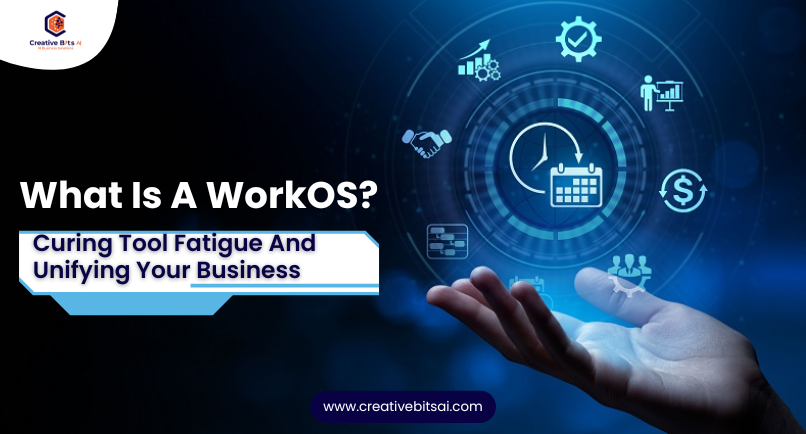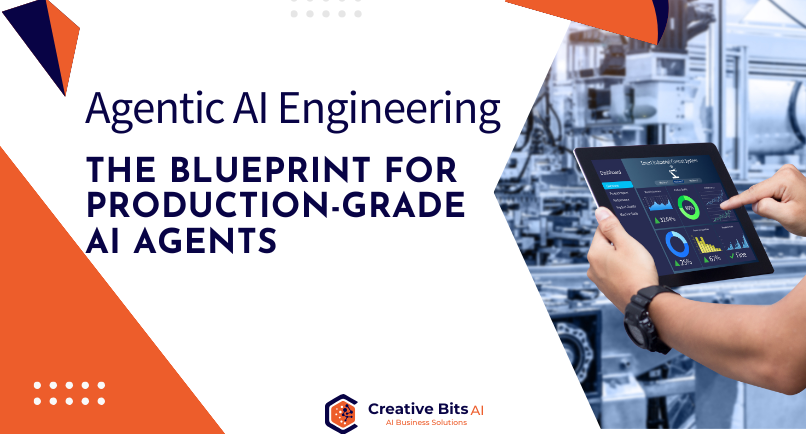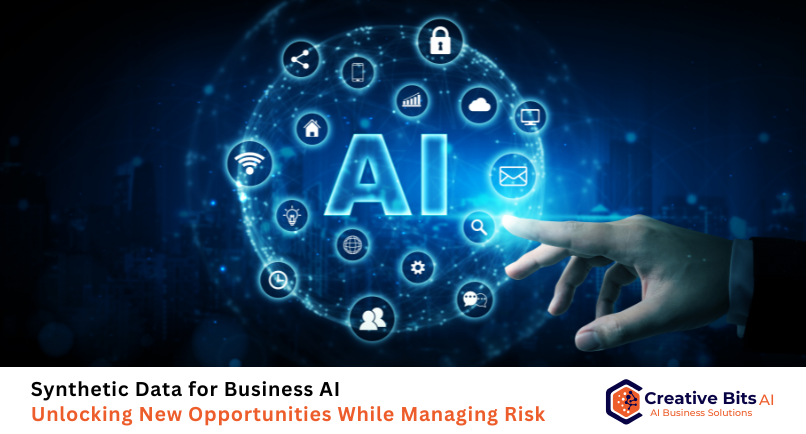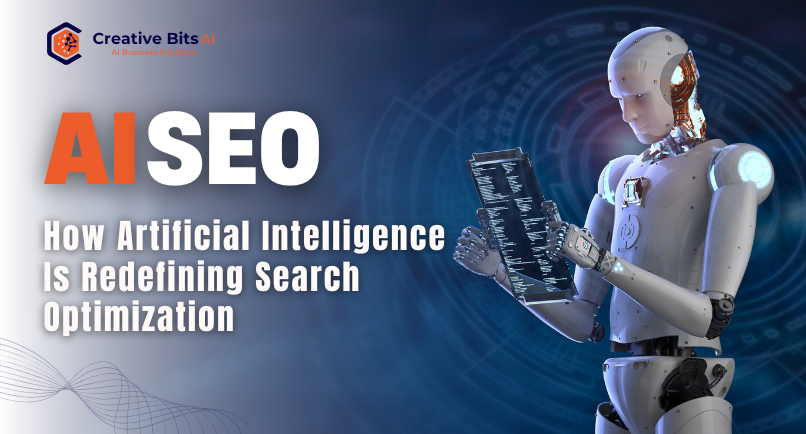In today’s digital world, businesses are increasingly utilizing a wider range of tools. There are project management apps, customer relationship management systems, time tracking software, and communication platforms, each designed to fix issues. But as the number of tools grows, they often lead to new problems: disjointed processes, repeated data entry, constant switching between apps, and slower decision-making. This situation, known as “tool fatigue,” causes wasted time, stress, and reduced productivity.
In the middle of this confusion, a new approach is gaining traction- the Work Operating System (WorkOS). Instead of adding more separate applications, companies are choosing integrated platforms like monday.com. These platforms are built on the idea that connecting tools is better than having too many apps. They turn separate tools into a single, organized digital workspace.
From App Fragments to Unified Command
Over the past ten years, the business world has seen the rise of top-performing tools like Trello for managing tasks, Slack for communication, Zendesk for customer support, and Salesforce for sales. Each of these tools is great on its own, but when used together, they create a fragmented experience. Teams often end up wasting a lot of time switching between different apps, repeating work, or manually sharing updates across platforms. This leads to poor visibility, inefficient teamwork, and a lack of clear strategic direction.
In response to these issues, platforms like monday.com, ClickUp, and Asana Enterprise have evolved. They’ve moved beyond being simple apps to become central systems that connect everything. Instead of offering features separately, they now work together to link workflows, bring data together, and handle repetitive tasks across the whole software environment of an organization.
What a WorkOS Actually Is
Imagine a Work Operating System as a flexible digital framework that links all your current tools and ways of working together. A WorkOS helps organizations by:
- Visually creating workflows using tools like kanban boards, Gantt charts, and timeline views that match how teams work.
- Bringing data together in real time through strong connections with hundreds of apps, such as Salesforce, Jira, Slack, GitHub, and others.
- Automatically performing smart actions based on context, like sending follow-up emails when a deal moves to the next stage in the sales pipeline or adjusting how resources are used based on how a project is progressing.
- Making unified dashboards that give leaders a complete picture of how things are going, where delays are happening, and how well teams are performing.
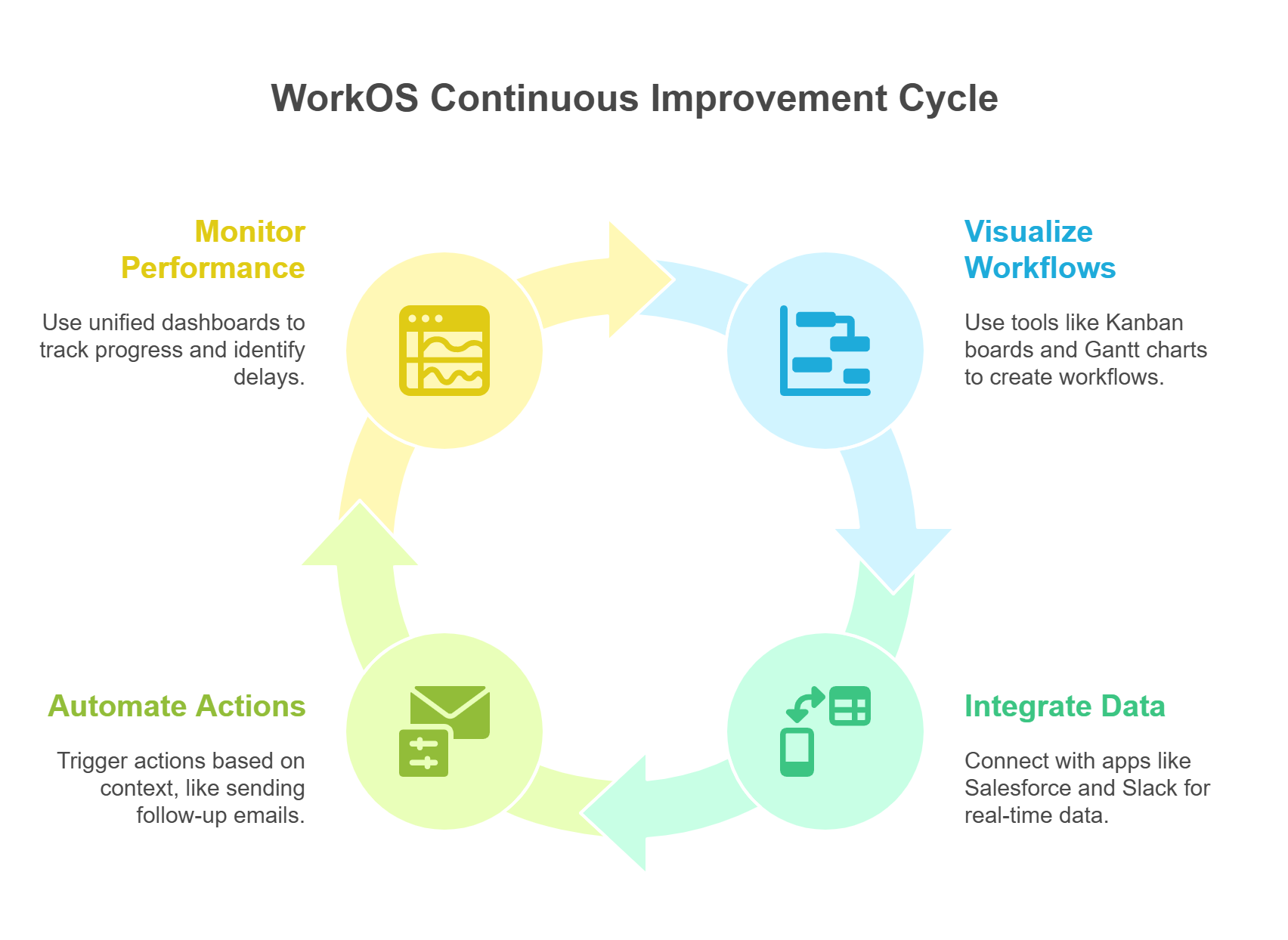
Because WorkOS works with the tools you already have instead of making you change everything, companies can grow without messing up their usual ways of working.
Integration-First, Not App-First
More software doesn’t mean better outcomes—alignment does. In an app-first environment, each team uses its own set of tools, which leads to silos and makes it hard to work together. For example, a marketing team using HubSpot might not see support tickets from Zendesk or product issues from Jira. But with an integration-first approach like WorkOS, data moves smoothly between systems.
If a customer gives negative feedback through support, that information can instantly update marketing efforts or start a follow-up. This shared visibility helps everyone across departments and allows for smarter, more timely decisions.
Tailored Across Industries
The WorkOS model is effective in nearly every industry. In manufacturing, connecting ERPs and inventory systems in real time helps automatically create restocking orders. In education, bringing together student data from LMS systems, attendance records, and billing information makes it easier to support students. Retailers can link their POS, e-commerce websites, and logistics tools, giving them real-time insights into inventory and how customers move through their journey.
In consulting, WorkOS platforms combine proposals, timesheets, and invoices to make the delivery and billing process smoother. No matter the industry, the main idea is the same: instead of adding more tools, companies gain value from having a single platform that manages complexity and brings things together.
Beyond Productivity: Strategic Agility
At its core, WorkOS is more than just a productivity tool—it’s a strategic asset. Leadership teams get real-time insights into how resources are being used, how projects are progressing, and how budgets are being spent. It can alert them to potential risks before they become bigger problems. At the same time, it helps spot opportunities, like sudden increases in capacity or successful campaigns, so they can act quickly.
As businesses grow, take on more complex projects, or adjust to new circumstances, this system ensures that processes change clearly and transparently. It provides a strong foundation for being resilient, moving quickly, and achieving growth that can scale.
monday.com: Evolution Into a WorkOS Pioneer
Many vendors provide parts of WorkOS features, but monday. com stands out as a top example. It started as a visual project board but has grown into a powerful, flexible platform that requires little or no coding. It offers more than 200 built-in integrations, plenty of customizable workflow templates, and enterprise features like role-based access and audit logs. This lets companies build their unique systems without needing to write code. They can create custom apps, set up automation flows, and use built-in AI tools to adapt the platform to different areas like legal contracts or global product launches—all while keeping the tools their teams already know and use.
Rethinking Work for the Integration Age
As technology moves quickly and competition gets tougher, the ability to bring systems and data together becomes a key advantage. Companies that rely on separate apps may find themselves stuck with messy processes and unclear information. On the other hand, organizations that use integration-first WorkOS platforms experience easier communication, better teamwork, and quicker decisions. The focus isn’t on adding more apps—it’s about building a connected system that works well with your existing tools.
The future of work isn’t about gathering more applications—it’s about combining them into a strong, efficient, and smart whole. That’s exactly what WorkOS helps achieve.
Conclusion: CreativeBits AI — The Intelligent Core of the Modern WorkOS
As companies move away from using separate digital tools and towards unified Work Operating Systems, the next big competition isn’t just about connecting systems—it’s about smart coordination. That’s where CreativeBits AI comes in. By putting AI-powered insights, flexible automation, and a deep understanding of context at the center of connected workflows, CreativeBits AI turns regular WorkOS platforms into smart, thinking environments.
Whether it’s helping make quick decisions, directing tasks before they’re even asked, or creating content on the fly, our AI tools give organizations the power to go beyond fixed processes and create a more responsive and personalized way of working. We don’t just link tools—we make them work better together.
From managing sales pipelines and HR processes to running marketing campaigns and developing products, CreativeBits AI serves as the intelligent layer that senses, learns, and directs actions throughout your business. In a world where being quick, clear, and smart is key to success, CreativeBits AI ensures your WorkOS is not only connected—but smart, flexible, and focused on people. Because the future of work isn’t just about technology—it’s powered by AI.
